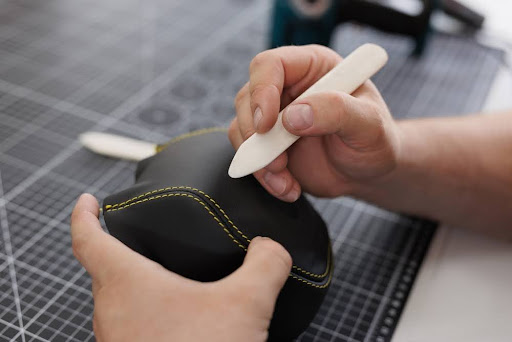Buying a car without understanding trims is like shopping blindfolded—you might find something that fits, but you miss the details that make it right for you. Trims define a car’s features, performance, and style, helping you match your needs with what’s offered. From faster engines to premium interiors or powerful tech, each trim level tailors the car to different needs and budgets. Ignoring them means you could miss out on features you value—or pay for ones you don’t.
Breaking Down Car Trims
A car trim refers to the different levels of features and finishes available for a particular vehicle model. Trims differentiate the same car model into multiple versions by offering various combinations of features, performance options, and aesthetic upgrades. Here's how trims can create different versions of a single model:
- Performance: Higher trims may offer more powerful engines, better handling capabilities, or additional performance features like sport-tuned suspensions or all-wheel drive.
- Interior Features: Trims can vary by interior materials (e.g., fabric vs. leather), upgraded seats (e.g., heated, ventilated, or power-adjustable), and better technology (e.g., larger touchscreens, better audio systems, or wireless mobile charging).
- Exterior Design: Different trims can include exterior upgrades such as special paint colors, unique wheel designs, LED headlights, or body kits.
- Technology and Safety: Advanced safety features and tech options like adaptive cruise control, lane-keeping assist, or autonomous driving features might be exclusive to higher trims.
- Price: With each higher trim level, the price generally increases due to the added features and capabilities, allowing buyers to choose a version that fits their budget and needs.
For Example: Toyota Camry
| Trim Level | Description |
| LE | Base trim with essentials like cloth upholstery, basic infotainment, and standard safety features |
| SE | Sportier styling, sport seats, better suspension, and some upgraded tech options |
| XLE | Luxury-focused with leather upholstery, much better quality sound system, and advanced tech features |
| XSE | Combines sporty features of SE with luxury features of XLE, offering premium materials and dynamic suspension |
Why Car Trims Matter More Than You Think
Car trims matter more than you think because they influence everything from the vehicle's performance to its comfort, aesthetics, and resale value. If you’re purchasing a car that you plan to drive for years, the decision to pay more for a higher trim makes a lot of sense.
While the base model will get you from point A to point B, the higher trim delivers a better and sound driving experience. You’re not just paying for extra features—you’re investing in more power, durable technology, and comfort. Though you pay more upfront, this investment can often translate into a better return when it comes time to trade in or sell the car.
When Higher Trims Are a Bad Idea?
The idea of "getting more"—whether it's performance, features, or aesthetics—makes buyers feel they’re getting more value for their money. Sometimes, manufacturers also frame trims as an opportunity to personalize a car, making buyers feel like they're selecting a version of the car that’s uniquely suited to their needs, even though the differences can sometimes be minimal in terms of core functionality.
In a recent report by Statista, Americans value fuel efficiency (54%) and safety (53%) over other features.

Hidden Costs Tied to Higher Trims (Insurance, Maintenance)
While higher trims offer more luxury and features, they often come with hidden costs that go beyond the initial price tag. One key factor is insurance—premium trims usually come with higher insurance rates due to their increased value and potentially more expensive repairs. For example, a higher trim may have specialized parts that require more expensive upkeep or servicing compared to the base model.
Common Misconceptions About Car Trims
Here are some common misconceptions about car trims:
"All trims are just cosmetic"
Nopes. While base models might focus on design elements, higher trims often bring substantial upgrades in performance, safety, and technology. For example, the Toyota Camry’s base model features a standard 2.5-liter engine, while the sportier XSE trim has a more powerful 3.5-liter V6 engine, along with a smoother suspension for better handling. Moreover, trims like the Lexus RX 350 F Sport offer next-gen driver-assistance systems, premium interior materials, and cutting-edge infotainment features, making them much more than just a cosmetic upgrade.
"You always need the highest trim"
The statement "You always need the highest trim" is a bit of an oversimplification. The highest trim isn’t always necessary for everyone. Many drivers may find that lower or mid-level trims offer a better balance of value and functionality. For example, the Honda CR-V’s EX-L trim offers a comfortable blend of features, including leather seats and an upgraded infotainment system, without the need to opt for the higher Touring trim, which adds more expensive luxury features that some may not need.
Misunderstanding trim-specific features (e.g., AWD as an optional add-on vs. standard)
A common misunderstanding about trim-specific features is assuming that certain options, like all-wheel drive (AWD), are either standard or always available across all trims. For instance, some models may offer AWD as an optional add-on only for higher trims, while others make it standard across various levels. Take the Subaru Outback, for example—AWD comes standard across all trims. In contrast, the Honda CR-V offers AWD only as an upgrade on lower trims, and it’s standard on higher trims like the Touring model. Misunderstanding this distinction could lead to confusion or disappointment when purchasing, as you may not realize that you need to upgrade to a higher trim for AWD.
Negotiation Tips: Using Trims to Get Better Deals
When negotiating for a car, understanding how trims influence pricing can help you secure a better deal. Here are some tips on how to leverage trims during negotiations:
- Look for Popular Trims: Dealers tend to have more of the mid-level trims in stock since they don’t sell as quickly as the base or top trims. You can use this to your advantage by negotiating a better price on these trims.
- Focus on What You Need: Identify the features that are really important to you, and don’t pay extra for trims with features you don’t need. For example, if premium audio or bigger touch screens aren’t a priority for you, a mid-range trim could save you money.
- Use Higher Trims as Leverage: If you’re eyeing a lower trim but are open to a higher one, use the higher trim as leverage in your negotiation. Dealers may offer discounts or promotions to move you up to a higher trim, giving you more value for a slightly higher price.
- Watch for Manufacturer Incentives: Car manufacturers often have promotions for specific trims. Be sure to check if there are any special incentives for the trims you're considering, as these can lower the price and make it easier to negotiate.
- Timing Matters: Dealerships may be more flexible on pricing, especially at the end of the month or year when they’re trying to meet sales goals. This can be a great time to negotiate a better deal on a higher trim than usual.
Conclusion
Understanding car trims is non-negotiable because it directly impacts the value, performance, and features of the vehicle you're considering. Trims determine not only the look and feel of the car but also the functionality and driving experience. Without understanding the differences between trims, you risk overpaying for features you don’t need or, conversely, missing out on important upgrades that could make your ride safer or more enjoyable.
Final opinion: "The best trim isn’t always the priciest one—it’s the one that fits your lifestyle." Choosing the right trim is about aligning the car’s features with your needs, budget, and lifestyle, rather than just opting for the most expensive option.
Frequently Asked Questions
How is a car's trim level different from its make or model?
The make is the brand, the model is the car type, and the trim level defines features and options.
Can I customize features from higher trims in a lower trim level?
No, customization is typically not allowed.
Can I upgrade my car to a higher trim level later?
Usually no, as trim levels are fixed at purchase.
Can I add features from a higher trim to a lower trim?
Not directly, but some aftermarket options may be available.




